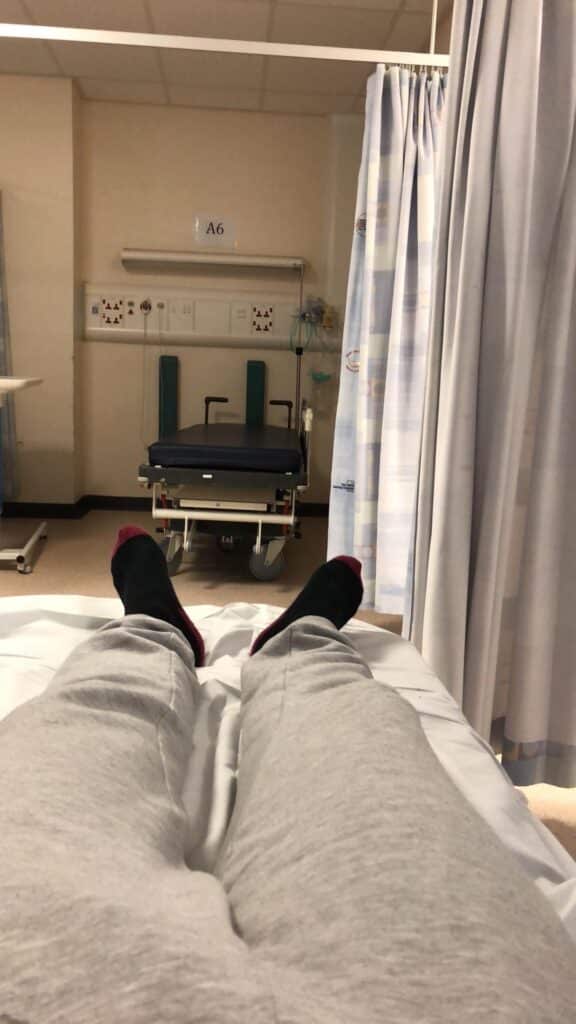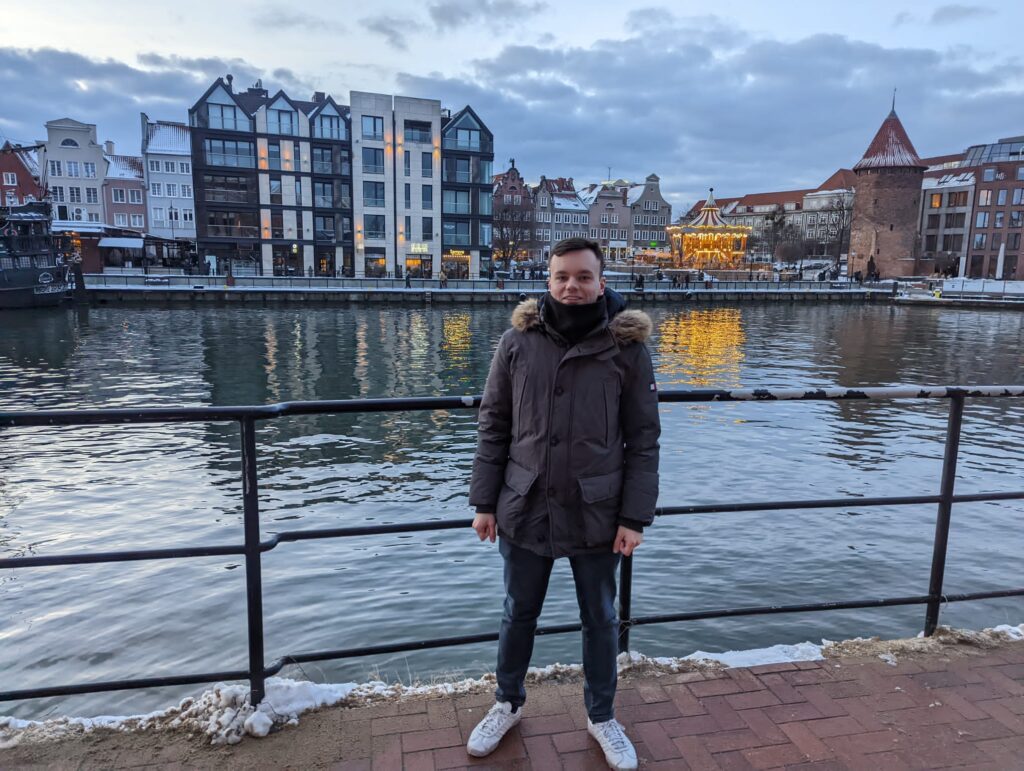
Choose Your Language:
Posted by: The Sumaira Foundation in MOG, Patient, Voices of NMO
On Monday, I woke up with a slight ache on the left side of my lower back which felt numb, like a bruise but without the pain. This numb spot would spread across my chest in the following days and become stronger. I woke on Thursday morning with pins and needles in both legs and unable to urinate. After contacting my doctor, I got an appointment later that day.

While walking to the clinic, my left leg started to weaken, causing me to be off balance and limp. When I arrived, I told the GP about the symptoms I had been experiencing throughout the week. He was unsure of what could be causing it but was very concerned about my inability to urinate.
My doctor then sent me to my local hospital, where I was examined and had an indwelling catheter inserted to release the urine. After an MRI scan of my lower spine, I was given a bed in the hospital overnight.
While walking into the bed bay area, I discovered I had lost most of the sensation and strength in my legs. I had to use the wall as support and guide my feet visually to avoid falling over.
After a further MRI scan the following day, I was diagnosed with transverse myelitis, which is spinal cord inflammation. The MRI scans showed inflammatory lesions between segments T2 – T7 and T8 – T11, along with other lesions in the brain.
I was admitted into a neurology ward and treated with IV steroids for five days. The IV treatment helped me regain my energy and feeling, and my strength began returning to my legs. I could now transfer myself from the hospital bed into the chair beside it, walk short distances with aid, and stand independently.
After five days of IV steroids, I started taking 50mg of oral steroids (prednisolone) daily. I also had a lumbar puncture/spinal tap to get a sample to find a cause for transverse myelitis in my spinal fluid. My neurologist believed that MOG antibody disease caused transverse myelitis due to how my symptoms presented, the MRI scans, and how quickly I recovered once treated. However, he needed to find antibodies to prove the diagnosis.
As I recovered, I could keep my balance, walk short distances, and use stairs. But one part of my recovery that proved to be an issue was urination. I had the catheter removed twice during my stay in the hospital, but despite the urge to go to the toilet, I was still unable to pass urine.
I returned home after two weeks of treatment in the neurological ward. I still had the catheter, but I could walk out without help. I believe my fast recovery was mainly due to being lucky that I was treated at a hospital with access to specialists who could realise that the issue I had was neurological quickly. Knowing this allowed them to give me the correct treatment as soon as possible and prevent much more damage from being done.
Two weeks later, I was able to have the catheter removed, and I was able to urinate again. I was also taught how to self-catheterise using temporary catheters, which gave me more freedom.
After leaving the hospital, I started to research more into TM, including what caused it, what other conditions it was related to, and what I could do to help my recovery. I found multiple sclerosis diets such as the Wahls diet and the findings of the HOLISM study, which suggested that someone diagnosed with MS could have better outcomes depending on their diet, exercise, and other lifestyle choices.
I then started using what I had learned to change my life, improving my recovery, reducing the likelihood of future attacks, and improving my quality of life. The main changes I made were following the Wahls Protocol diet as much as possible (the most challenging diet I have tried to follow), exercising, and stretching daily to improve my overall fitness.
My exercise routine started with forcing myself to walk up and down the stairs of my house until I was confident to use them. I also did stretches for my legs. As the sensation improved, I started bodyweight exercises such as squats, lunges, and calf raises. Eventually, I started walking around my local park, which led me to start a couch to 5km programme using an app on my phone.

I have since tested positive for MOG antibodies twice, and my MRI scans have shown signs of recovery. Since being discharged, I could taper from 50mg of steroids daily to 0 and replace it with Azathioprine as a preventative treatment for MOGAD.
As of today, I am around 95% back to normal. My only lingering issue is with my bladder, as I still have urgency issues. To help with this, I still self-catheterise when going out of the house for long periods, giving me much more freedom.
I am still taking Azathioprine as a preventative treatment. However, I have discussed with my neurologist stopping this treatment soon, provided I do not have any relapses.
While recovering, I started a website called MyMyelitis. MyMyelitis was initially created as an accountability blog to keep up with diet and exercise while recovering. But I found that information about MOGAD took a lot of work to find online, so I started publishing information to help others diagnosed.
Advocating for people with MOGAD has opened up many opportunities to connect and collaborate with others in the space. Some examples are:
I highly recommend advocacy as a way of dealing with your condition. Be that by sharing your story with the non-profit organisations involved in MOGAD or sharing information with others through a website or social media. There are many opportunities to make a difference in the MOGAD space, and finding a way to get involved keeps you connected to others going through it too.